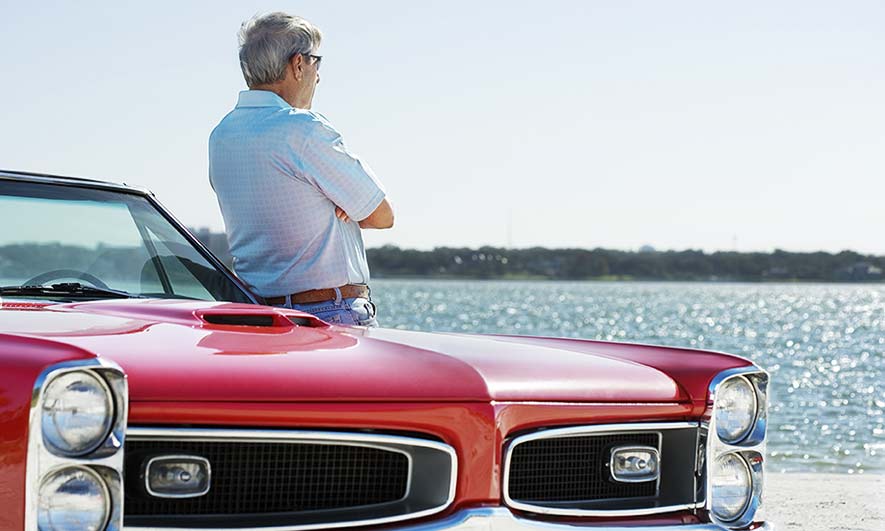
Introduction to Classic Car Insurance
When it comes to insuring your beloved classic car, it’s important to understand that not all insurance policies are created equal. Classic car insurance is specifically designed to cater to the unique needs of vintage car owners. In this comprehensive guide, we will delve into the world of classic car insurance and provide you with all the essential information you need to know. Insurance is a highly important for the classic vehicles like the 1967 Mustang and Range Rover Classic.
The Difference Between Classic Car Insurance and Regular Car Insurance
Classic car insurance differs from regular car insurance in several key ways. Firstly, classic car insurance policies are typically offered by specialty insurers who understand the intricacies of vintage vehicles. These policies take into account the age, rarity, and value of your classic car, as well as the limited mileage it is driven each year. Unlike regular car insurance, classic car insurance often offers agreed value coverage, where you and your insurer agree on the value of the vehicle upfront, rather than basing it on market depreciation.
Another important distinction is that classic car insurance policies often come with certain restrictions. For instance, most insurers require that your classic car is used strictly for leisure purposes and not as a daily driver. Additionally, you may be required to store your vehicle in a secure garage and have a separate means of transportation for everyday use. These restrictions help to mitigate the risks associated with vintage cars and contribute to the lower premiums often associated with classic car insurance.
Factors That Affect Classic Car Insurance Rates
Several factors come into play when determining the cost of your classic car insurance policy. The age, make, and model of your vehicle are significant factors, as more valuable and rare classics tend to have higher premiums. The condition of your car also plays a role, as well-maintained vehicles are seen as lower-risk and may qualify for lower rates. The location where your car is stored and the amount of mileage you expect to drive each year are also considered.
Your driving record and experience are important factors, as insurers want to ensure that your past behavior on the road is indicative of responsible driving. Additionally, your age and gender can impact your rates, as statistics show that certain age groups and genders are more prone to accidents. Lastly, the coverage options you choose, such as liability, collision, and comprehensive, will also affect your premium.
Types of Coverage Available for Classic Car Insurance
Classic car insurance policies offer various coverage options to protect your prized possession. The most basic coverage is liability insurance, which covers damages or injuries you may cause to others in an accident. This is typically a requirement in most states. Collision coverage, on the other hand, covers the cost of repairs or replacement if your classic car is damaged in a collision, regardless of who is at fault.
Comprehensive coverage is also available, which protects your vehicle from non-collision incidents such as theft, vandalism, fire, or natural disasters. This coverage is particularly important for classic cars, as they are often more susceptible to these types of risks. Additional coverage options may include uninsured/underinsured motorist coverage and medical payments coverage.
Common Misconceptions About Classic Car Insurance
There are several common misconceptions surrounding classic car insurance that can lead to confusion. One such misconception is that classic car insurance is prohibitively expensive. While it’s true that some rare and valuable classic cars may require higher premiums, classic car insurance can often be more affordable than insuring a regular vehicle. The limited mileage and restricted usage of classic cars contribute to lower risks and subsequently lower premiums.
Another misconception is that classic car insurance only covers vehicles that are kept in pristine condition and never driven. In reality, classic car insurance is designed to protect cars that are driven responsibly and enjoyed by their owners. As long as you adhere to the agreed-upon mileage limits and storage requirements, your classic car can be fully covered.
Conclusion: Protecting Your Classic Car With the Right Insurance Coverage
Your classic car is not just a means of transportation; it’s a piece of history and a cherished possession. Protecting it with the right insurance coverage is essential to ensure peace of mind and financial security. Classic car insurance offers specialized coverage tailored to the unique needs of vintage vehicle owners, providing protection against accidents, theft, and damage. By understanding the differences between classic car insurance and regular car insurance, as well as the factors that affect rates and the types of coverage available, you can make an informed decision and safeguard your classic car for years to come.
Now that you have a comprehensive understanding of classic car insurance, it’s time to ensure that your beloved vintage vehicle is adequately protected. Contact a reputable classic car insurance provider today to discuss your options and find the perfect coverage for your treasured automobile.
Protect your classic car’s legacy with the right insurance coverage. Contact us today for a personalized quote and secure your vintage vehicle’s future.

